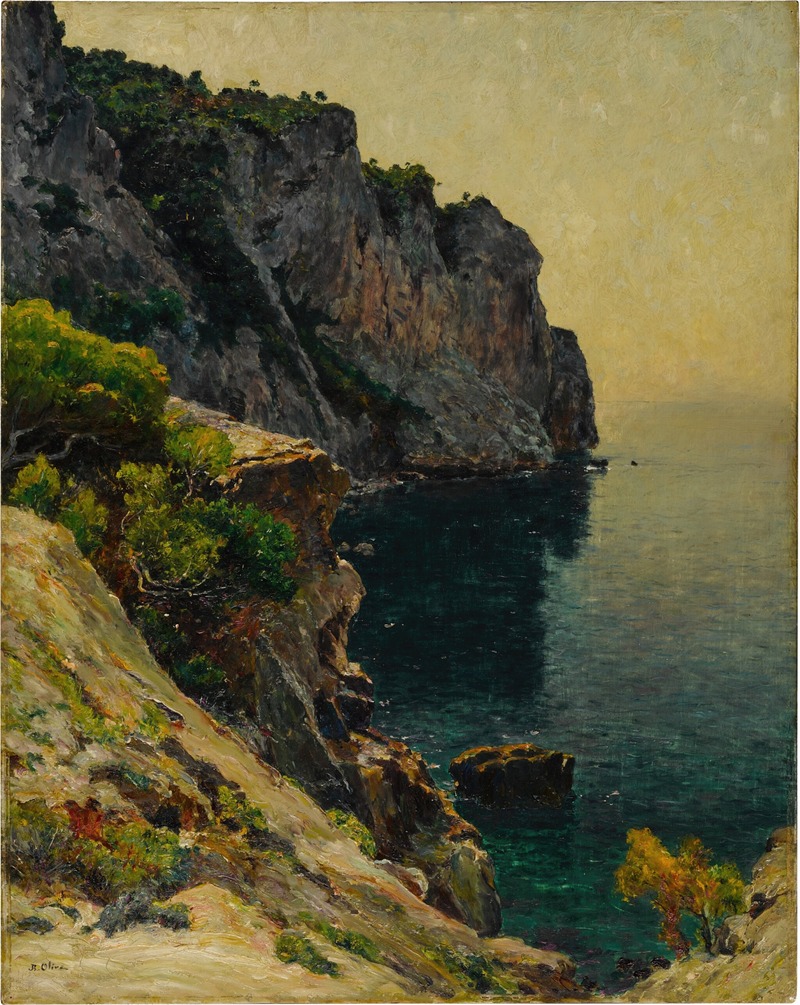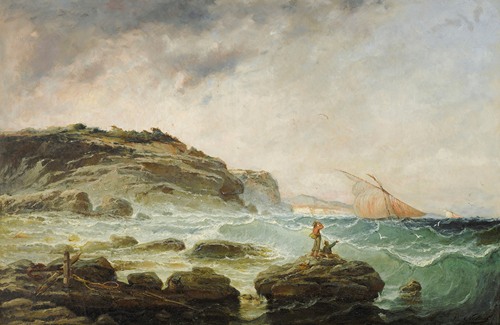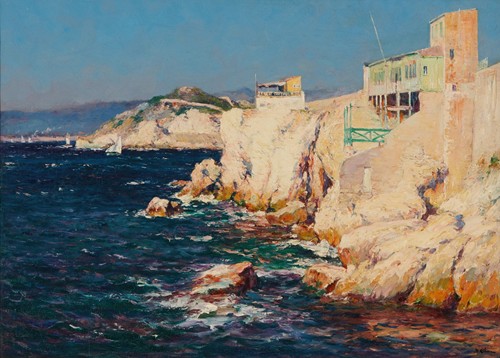

Jean-Baptiste Olive was a French painter.
Olive, the son of a wine merchant, was born in Marseille's Saint-Martin neighbourhood. Étienne Cornellier, a decorator, encouraged him to register at École des beaux-arts de Marseille where he studied under the guidance of Joanny Rave. There he received several awards including, in 1871, the live model class's first prize. While training as a decorator, he painted many scenes of Marseille, its Vieux-Port, its islands, and its seashore. In 1874 he travelled to Italy, mainly to Genoa and Venice. He occasionally participated in some of Provence's exhibitions at the time.
In 1882 he relocated to Paris. He contributed to the decoration of Cirque d’Hiver, Basilica of the Sacré Cœur and Exposition universelle de 1889 (he was awarded a silver medal for the latter). From 1874 onward he exhibited repeatedly at Salon de Paris and was awarded several prizes there. In 1881 he became a member of Société des Artistes Français.
In 1900 he won an order by the company Chemins de fer de Paris à Lyon et à la Méditerranée for two paintings created as decoration for the Golden Room at Le Train Bleu (restaurant) designed by architect Marius Toudoire in the Paris-Gare de Lyon train station (both paintings can still be seen there).
In 1930, aged 82, he was awarded the Léon Bonnat prize.
In addition to Étienne Cornellier, his friends were painters Gustave Marius Jullien (1825-1881), Antoine Vollon, Robert Mols, Raymond Allègre and Théophile Décanis.
He was supported by several patrons, among them General Malesherbes and Marie-Louis Gassier, the owner of company Berger, a producer of pastis. In 1948, twelve years after his death, Marseille's Musée Cantini dedicated an exhibition to his centenary, displaying eighty-two of his paintings.



